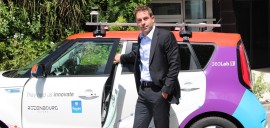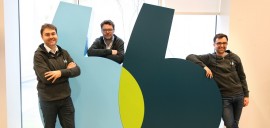It’s funny to see how often IT is compared to the car industry. Perhaps that’s because fast cars and gadgetry appeal to men, who traditionally dominate both verticals. Another reason may be that car manufacturing is always at the forefront of using information technology to make cars better, faster and safer. But for all that, the huge hype that surrounds driverless cars these days, marks only the beginning of a bigger movement, a true paradigm shift in society.
Cars are a great example of the way digital is taking over in our lives, and how some tasks are being automated. Just think of the computer diagnostics that are used when you bring your vehicle to the garage for maintenance. Rather than checking all the parts, the mechanic will connect a computer that ‘reads’ your car’s statistics and tell him what to replace or repair. Electronic Fuel Injection has pensioned off the traditional carburetor, Global Positioning Systems have saved many a relationship in which the co-driver was bad at reading maps. Four-wheel drives and airbags, two important safety features, were only made possible because of the IT underpinning them. In fact, processors were already used in cars to control the engine as early as the 1970s, so long before the first computers started landing on desks. From 1980 onwards, hardly any car got off the production line without an array of electronics in it.
“Could a search engine specialist really come up with an innovation
that the industry being disrupted had not thought of yet?”
Disrupted by newbies
Although the automotive industry is so progressive in the use of electronics and digital equipment in its products, it is also one that that could be disrupted by digital technology. It came as a huge surprise to carmakers that a company like Google was first to go public with the concept of the driverless car or autonomous vehicle. Could a search engine specialist really come up with an innovation that the industry being disrupted had not thought of yet? Of course not, there had been projects for autonomous cars as early as the 1920s and major manufacturers including Mercedes Benz, Volkswagen, Audi, BMW, Volvo, Toyota, Nissan, Ford and General Motors have been testing driverless systems for a decade or more. The car industry was not taken by surprise when Google showed off its systems, although they may have been taken in speed and Google’s move has forced them to crank up their R&D in that area. But the sheer fact that a player from a completely different industry can generate such a buzz around an innovation in the car business clearly demonstrates that many markets are wide open to new entrants using digital technology to make a tectonic shift happen. It is no surprise that a company like Tesla is applying the open source philosophy to its patents, inviting everyone to use Tesla’s innovations to accelerate the migration towards sustainable transport.
Societal impact
In the end, this is not about cars. Driverless cars are a big test to the way society can handle such a major change. It is often said that the technology of driverless cars is well ahead of the law in many respects. Not only is the car industry about to be disrupted. How about the insurance market? Who will still need car insurance once these flawless autonomous systems will relegate collisions and accidents to something we will only see in old movies. Come to that, how boring will car chases become in detective series? How will the entertainment sector evolve now that a car no longer needs the driver’s attention and the vehicle can truly become a moving multimedia entertainment space? What will we do with the extra time that is freed up? Will we become more productive? Or will we spend more on leisure activities?
Making the change even more profound, the advent of the autonomous vehicle does not come alone. Researchers think the sharing economy will slow down car sales. Cars sit idle for 96% of the time and networks like Uber, Lyft or Curb may reduce the number of cars sold. Fewer cars means fewer parking spaces which, in turn, causes governments to rethink the design of cities: parking spaces take up as much of 24% of the area of American cities.
Couple that with the renewed push of artificial intelligence, and you will find that these driverless cars will communicate with millions of other devices, taking even more responsibility out of the car owner’s hands. Pushing it even further, computer systems may be making more intelligent decisions than human beings in the near future, eliminating thousands of jobs. Even if we argue that driving your own car is a leisure for many, what about the trucks on our road: they are possibly the first to be disrupted, again smashing hundreds of thousands of jobs!
Meanwhile, in the datacenter
Rest assured, driverless cars are only the tip of the iceberg of the changes that await us. And believe me, the impact on the way companies deal with IT will become dramatically different in the future too. As more objects become digitally native, the amount of data generated by sensors of all kinds will grow exponentially and storage needs will explode. As the workload for IT increases, automation will become an imperative, unless you want to keep adding extra staff to cope with all the new demand. Fortunately, the move towards automation was already set in motion quite some time ago and the drive towards the software-defined datacenter (SDDC) is providing the necessary flexibility and the right level of automation.
So fortunately, the increased intelligence in the datacenter will be able to cope with the uptick in automation and intelligence in the systems that send massive amounts of information to the datacenter. And with the tide of change that’s coming towards us, that’s a reassuring thought.
Source: EMC










